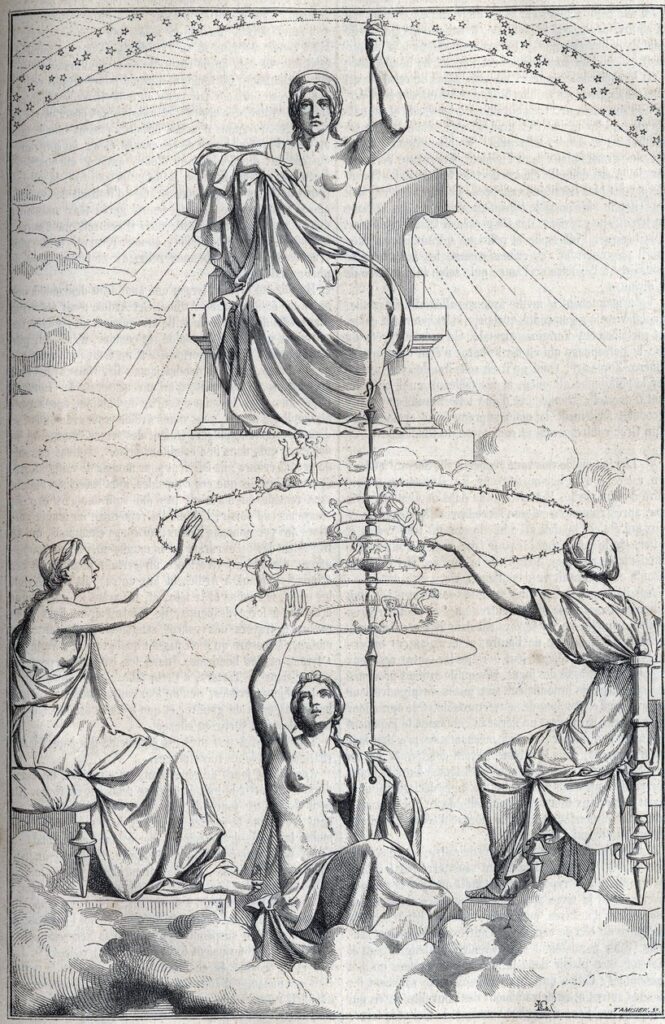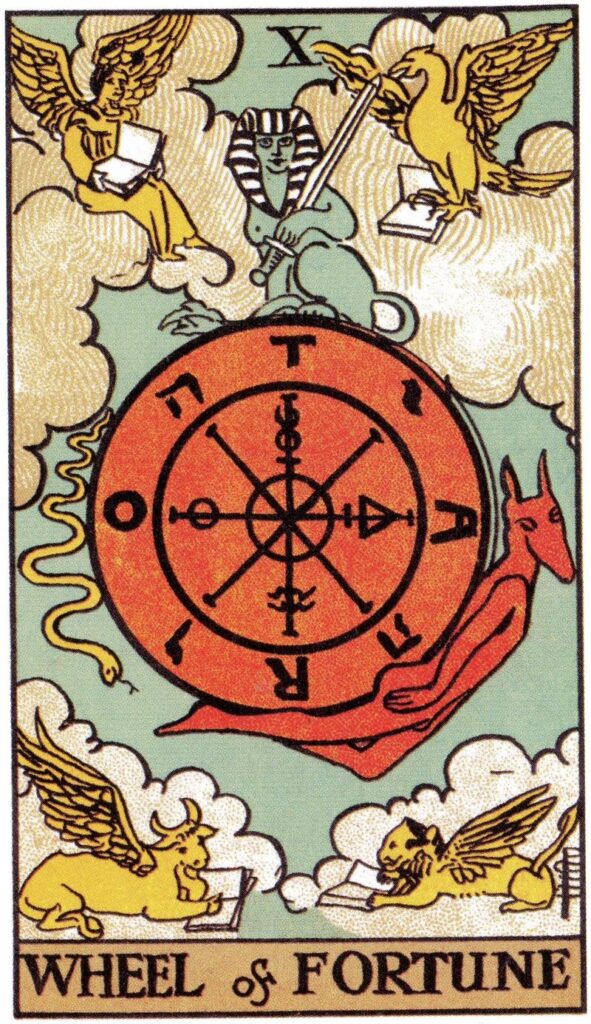Language hides the map of the soul. Words that in daily speech are used lightly once carried within them the full weight of heaven. To consider meant to look at the stars, to stand under the sky, to read in their light the measure of human time. Design comes from the act of marking with a sign, tracing the figure that gives shape to intention, as if the heavens engraved their decree upon the wax of becoming. Destiny derives from the act of aiming, setting firm, like an arrow stretched on the bowstring, already pointed towards its mark.
In these three words we discover a secret grammar of the cosmos: to consider is the gaze, to design is the sign, and to destine is the seal. The ancients heard within language the echo of the eternal order, since etymology was not mere history of speech but revelation of hidden law.

The myth of Er in the Republic of Plato is the clearest witness. The souls rise to the meadow of heaven; the spindle of Ananke is revealed; the Moirai sing their chant. But before each soul lies the necessity to consider the order above; then to make its design, selecting the pattern of life; and to accept the destiny fixed within the spindle. The words correspond perfectly to the vision, the choice, and the binding. Language remembers what myth enacts.
I. To Consider: The Gaze to the Stars
The Latin considerare comes from cum and sidera; it means to be with the stars. The act of consideration was cosmic attention. To consider meant to align oneself with the heavens, to become companion to the constellations. The augur, reading the sky, performed this sacred gesture each time he interpreted the pattern of birds or planets. In that etymology lies the memory of an entire worldview: to consider is to recognise that human action has meaning only when placed in relation with the celestial order.
The Greek counterpart lies in the verb theorein, from which comes “theory”. To theorise was to look upon, to gaze with intensity, to contemplate the order of things. It shared the same gesture: vision turned upward, a seeing that participates in what is seen. The act of consideration is linguistic and ritual; in the very structure of the word we find the gesture of lifting the eyes and binding thought to the heavens.
II. To Design: The Mark of the Sign
The Latin designare carries two layers: de as intensifier, and signare, to mark with a sign. To design is to draw out, to impress a figure with authority. In legal and sacred contexts, a design was a pointing that established order. The word preserves the root signum, that which mediates between visible and invisible, the trace that carries authority.
In Plato’s mythic language, once the soul has considered the cosmic spindle it must design its future life. The act is the imprinting of a sign upon time, not something casual. The sign precedes, the soul receives and, through the act of choosing, it engraves that sign into the substance of destiny. To design is to read and to trace, to join the heavenly imprint to the earthly wax.
Greek too carries this logic in sēmeion, the sign. The word survives in semiotics, the science of signs, but, in its ancient sense, it meant omen, token, Divine signal. When we speak of design, we accept that all human shaping begins with a sign from beyond, which must then be impressed upon matter. Language preserves this memory each time the word is spoken.
III. To Destine: The Fixing of the Course
The Latin destinare means to set fast, to fix firmly, to establish with determination. It belongs to the same family as stare, to stand. To destine is to set a thing so that it stands immovable, aimed like an arrow at its mark. The original sense was military and juridical; to destine was to assign, to appoint with firmness. Only later did it acquire the full metaphysical weight of fate and necessity.

The Tarot preserves this truth in the Arcana X, the Wheel of Fortune. The Wheel is the turning of destiny, Jupiterian in power, its Hebrew letter is Kaph, the palm of the hand, where lines of fate are traced. To destine is to hold within the palm the fixing of life’s course. On the Tree of Life, the path of Kaph joins Netzach to Chesed, ascending the pillar of the Father. This is destiny: the fixing of design within the wheel of providence, the sealing of the sign upon the palm of time.
Fiat Lux.
